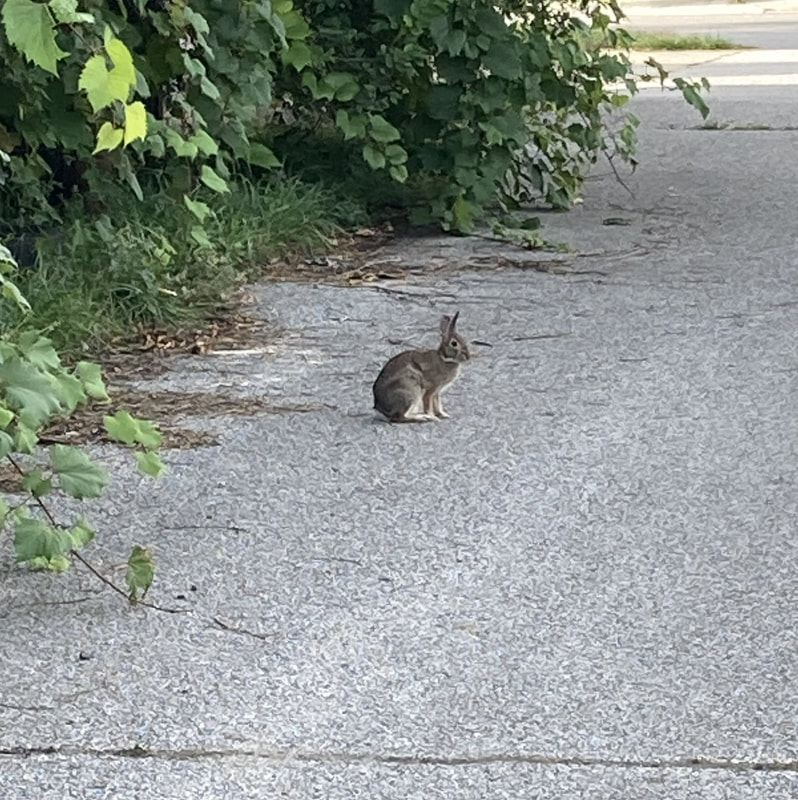|
Photo and article by Donna Iverson Quick as a bunny is no understatement. Our Eastern Cottontail rabbit can run 18 miles an hour. Speed is its major defense against predictors. And they need a good defense as they are the most preyed upon animal in North America. Native to our region, the Eastern Cottontail can be found in suburbs and towns. Likely, you have spotted them occasionally in your yard or garden. They like to live on the edge of an open space surrounded by trees and brush. Cottontails are most active at night, feeding primarily at dawn and dusk. They are herbivores and natural foragers, nibbling on your garden veggies, wildflowers and herbs. They also like weeds. Those dandelions in your yard ? A feast for a Cottontail as well as for the bees. The predator list of rabbits is long and terrifying. They include foxes, recons, snakes, rats, weasels, bobcats, hawks, owls, badgers, bears, coyotes, crows, and even your pet dog or cat. The saying “hare today; gone tomorrow” is, unfortunately, what happens to the Cottontail. Due to predators, its lifespan averages about 12 to 18 months. Still backyard rabbits multiple faster than the killing rate, averaging six liters a year. With winter coming, the rabbits will spend more and more time in their underground dens. For food, they will rely on twigs, bark and even pine needles. It’s best not to feed them unless it’s to throw out an occasional salad vegetable as a treat. Actions you can take to provide a safer habitat include planting some bushes along the edge of your property. Especially appreciated would be blackberry and honeysuckle bushes. Don’t use herbicides or fertilizers as they are poison to these creatures. And if you aren’t the tidy gardener, a brush pile or two would also be welcomed. Lastly, you may be wondering what the difference is between a bunny and a rabbit. Nothing really. A young rabbit is called a bunny, but adult rabbits are also referred to as bunnies. Rabbits are relatives of the hare, which is its wilder cousin with its longer ears. The hare has no white tail and makes its nest above ground. And no, I’m not going into recipes.
0 Comments
Your comment will be posted after it is approved.
Leave a Reply. |
Archives
July 2024
Categories |

 RSS Feed
RSS Feed